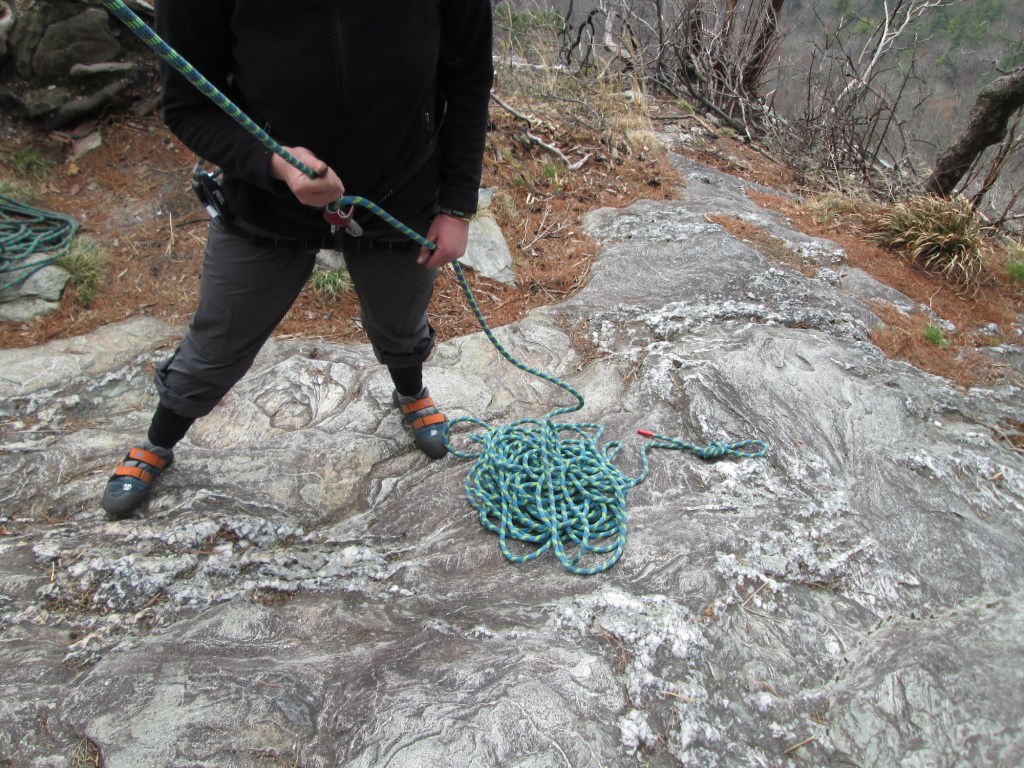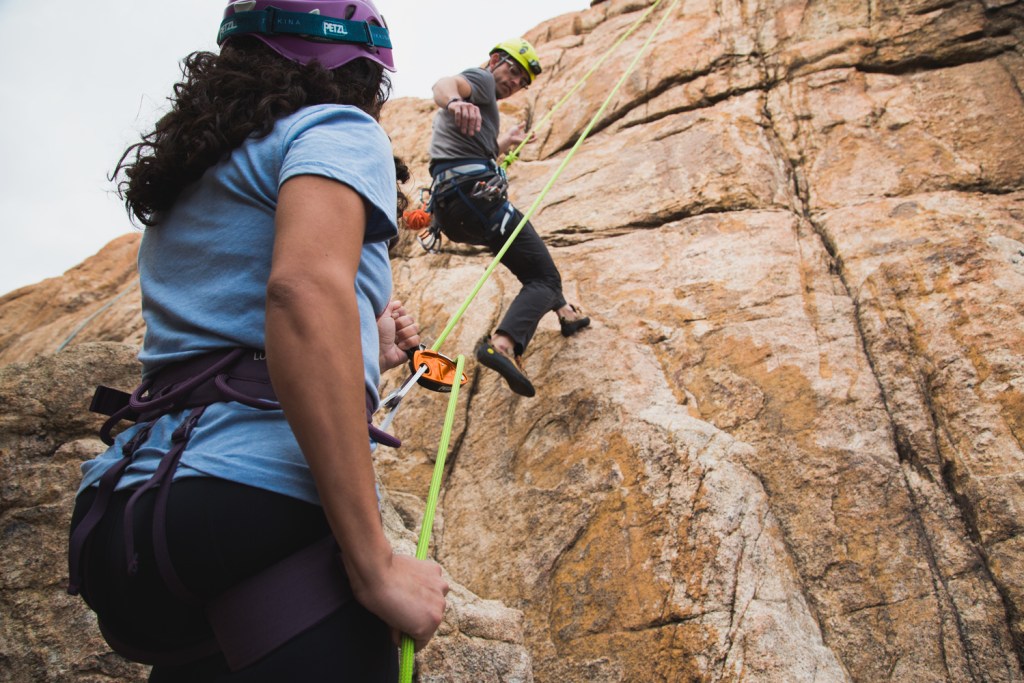Countless times a day, all over the country, a rock climber reaches the top of a pitch, attaches the rope to an anchor, and leans back so their belayer can lower them safely to the ground. But every now and then, something goes horribly wrong. Suddenly the climber is in free fall.
As the editor of Accidents in North American Climbing, I’ve observed an increase in such lowering accidents. Accidents, a book published each August by the American Alpine Club, is designed to educate climbers by documenting mistakes of all kinds and sharing the lessons learned from them. In general, the publishers of Accidents in North American Climbing have found that the number of reported climbing injuries and fatalities has not increased significantly in the last few decades. But the pace of lowering accidents appears to be increasing, though it is difficult to attribute the trend to any one cause.
The reports collected by Accidents in North American Climbing come from U.S. and Canadian climbers, national park rangers, and search and rescue volunteers and professionals who contact the AAC directly or respond to inquiries. We don’t hear about every single accident that happens, but the numbers still reveal common causes. In the 2016 edition of Accidents, the first year we tabulated reported lowering accidents, we recorded six such incidents. The following year, we identified seven. In the 2018 edition, we documented 12 reported lowering incidents. Year after year, these accidents involve new climbers and highly experienced veterans alike.
The good news: Lowering accidents can be avoided. In the majority of cases, a few simple steps would have likely prevented an injury or death. Here are some takeaways from recent lowering accidents.
Not Enough Rope
On July 3, 2017, Yosemite Search and Rescue responded to two separate but similar climbing accidents, each involving a climber lowered by a belayer with a rope that was too short. In both cases, the end of the rope passed through the belay device and the climber fell to the ground.
The Problem
There are a few common reasons a rope may come up short: 1) A climber may have borrowed the rope and been misinformed about its length; 2) The rope may have been cut at some point and the climber didn’t know this or forgot about it; 3) A climber may underestimate the length of a route or the distance to be lowered. Guidebooks and other sources sometimes misstate the height of the anchor. Other times, a route may traverse over a drop-off or hillside and more rope than expected will be needed to lower a climber.

Get in the habit of typing a stopper knot in the belayer’s end of the rope befeore any single-pitch climb. (Either a double overhand or a figure 8 on a bight is simple and effective.) A stopper knot prevents the end of the rope from slipping through the belay device in case the rope is too short for lowering a climber from an anchor. Photo Credit: Ron Funderburke
Solutions
Every single time… Close the belay system so the end of the rope can’t pass through the belay device. You can do this by tying a stopper knot in the end of the rope. Alternately, the belayer can tie into their end of the rope with a figure 8 knot or tie the end to a rope bag with a snug overhand knot.
More Smart Moves:
- Know your rope length. If you’re not using your own rope and you’re not positive the “60” you borrowed is actually 60 meters, measure it.
- Belayer: Watch for the midpoint marked on the rope as the lead climber ascends. If the midpoint passes through your belay device and the climber still hasn’t reached the anchor, alert the climber. Rope stretch or higher terrain below the anchor might allow the climber to lower safely to the ground, but be certain the system is closed with a knot at the belayer’s end. If there is any doubt the climber will reach the ground, the climber should haul another rope to the anchor and rappel with two ropes.
- Belayer: Always lower a climber slowly and keep one eye on the free end of the rope.
Learn More:
Communication Breakdowns
Last September, two very experienced climbers in southwestern Colorado were enjoying their fourth route of the day. On each previous climb, the last person up the route had rappelled from the anchor to clean their gear. However, on the fourth climb, a 5.12, the second climber decided to lower off the anchor instead of rappelling. Since the belayer assumed the climber would be rappelling, she took him off belay once he reached the anchor. The climber leaned back to lower and fell to the ground, suffering serious injuries.
The Problem
A climber reaches the top of a pitch and tries to lower, but the belayer either is not ready or has taken the climber completely off belay, expecting them to rappel.

Focus on the climber (rather than chatty friends or active pets) as you lower the climber slowly and steadily to the ground. Check your end of the rope periodically to make sure there is still plenty of rope available for the climber to reach the ground.
Solutions
Every single time… Tell your belayer what you plan to do when you reach an anchor (lower back down, rappel, walk off, etc.) and stick to that plan. If for some reason you have to change the plan (you forget to carry your rappel device, for example), do not try to lower from the anchor until you’ve visually and audibly confirmed the belayer is ready to lower you.
More Smart Moves:
- Climber: Use only essential commands when communicating from an anchor down to the belayer on the ground. Extraneous communication risks belayer confusion. Never say “off belay” unless you are fully anchored and planning to rappel or walk off the climb. If you’re planning to lower, you don’t need to say anything at all until you are ready for the belayer to lower you.
- Climber: Don’t commit your weight to the rope until you’ve audibly and visually confirmed that the belayer still has you on belay.
- Belayer: If there’s any doubt about the climber’s intention, don’t take them off belay. Wait until the climber has confirmed they’re “off belay” and plan to rappel.
Learn More:
Anchor Errors
In early 2016, a very experienced climber from New Mexico was the last in her group to top-rope a 170-foot route in Diablo Canyon, near Santa Fe. Because the pitch was so long, the group had tied two ropes together for top-roping. Before climbing, each person would clip into a figure 8 tied in the middle of one rope using a locking carabiner. As the last climber prepared to clean the anchor and lower, she accidentally clipped the free-hanging tail of her figure 8 knot into the steel lowering carabiners at the anchor instead of clipping the belay rope. When she removed her personal anchor system, the twisted ropes briefly held her weight and then she fell to the ground.
The Problem
A climber clips the wrong strand of rope into an anchor, improperly threads the rope through an anchor, or fails to retie the rope correctly to their harness after threading it through an anchor.
Solutions
Every single time…Test the anchor system before committing to it. While you’re still clipped to the anchor with your personal anchor system, slings or quickdraws, ask the belayer to “take” your weight, then pull your waist up until the tether goes slack and you can verify that your weight is being held by the belay rope. Only then should you unclip your tether from the anchor.
More Smart Moves:
- Climber: Learn a good method for cleaning the gear from the top of a climb and stick with it. The American Alpine Club recommends a technique that keeps the climber on belay throughout the anchor-cleaning process and involves the climber being lowered by the belayer. Rappelling off an anchor is another standard practice.
- Practice safe anchor cleaning on the ground before trying it on a real climb. No one wants to learn how to clean an anchor with the belayer yelling up instructions from 75 feet below.
Learn More:
If you’re new to outdoor climbing, where there are many more variables than you’ll find in the gym, it’s best to learn these techniques from a guide or other experienced, trusted mentor. You’ll be lowering hundreds or thousands of times in your climbing career: Learn to do it safely from the start.
Editor’s note: Safety is your responsibility. No article or video can replace proper instruction and experience—this article is intended solely as supplemental information. Be sure you practice proper techniques and follow safety requirements before you climb.
